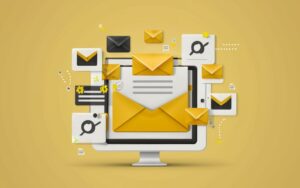Introduction
Finding yourself overwhelmed by the tidal wave of emails isn’t unusual. If “how to check my email inbox” is a daily question, you’re not alone. With busier schedules and an ever-increasing reliance on digital communication, effectively navigating your email inbox can feel daunting. However, understanding how to check your email inbox efficiently can transform your email experience from being a source of stress to a streamlined part of your daily routine.
You’ll Learn
- The Importance of Efficient Email Management
- Step-by-Step Guidance on Checking Your Email Inbox
- Popular Email Platforms Comparison
- Tools and Features to Enhance Productivity
- FAQs on Email Management
The Importance of Efficient Email Management
According to a study by the Radicati Group, the average office worker receives roughly 121 emails per day. While this number might evoke a gasp, it emphasizes the need for a more systematic approach to checking and managing email. Poor email management can lead to missed opportunities, decreased productivity, and added stress. Understanding how to check my email inbox effectively saves time and keeps you focused on tasks that truly matter.
Consequences of Inefficient Email Handling
- Increased Stress and Anxiety: Constant notifications and an overflowing inbox can lead to cognitive overload.
- Decreased Productivity: Time spent sorting and searching for emails detracts from valuable work time.
- Risk of Important Emails Being Overlooked: Important communications might get buried under less critical messages.
Step-by-Step Guidance on Checking Your Email Inbox
Choose the Right Email Client
Email platforms offer diverse features catering to different needs. Selecting an email client that aligns with your requirements is the first step in mastering how to check my email inbox efficiently.
- Google Gmail: Popular for its intuitive interface and seamless integration with other Google services, Gmail is suitable for both personal and professional use.
- Microsoft Outlook: Preferred in corporate settings, Outlook offers powerful tools for scheduling, contact management, and task tracking.
- Apple Mail: Ideal for Apple ecosystem users, offering integration with macOS and iOS.
- Yahoo Mail and Others: Various other providers offer unique features and might be suitable depending on specific preferences.
Setting Up Your Inbox with Best Practices
- Organize with Folders or Labels: Create categories for your emails such as "Work," "Personal," "Urgent," etc.
- Utilize Filters: Set up filters to sort incoming mail automatically into the correct folders.
- Optimal Notification Settings: Turn off non-essential notifications to reduce distractions.
- Regular Maintenance: Regularly delete or archive old emails to keep your inbox manageable.
Checking Emails: Establishing a Routine
Effective email checking is habitual. Consider setting multiple specific times during the day to check your email actively rather than reacting to every notification. This schedule could be once in the morning, after lunch, and before logging off in the evening.
Popular Email Platforms Comparison
Gmail vs. Outlook
User Interface:
- Gmail boasts a clean, straightforward interface with customizable themes. Features like “Smart Compose” improve efficiency.
- Outlook provides a more feature-rich environment with an emphasis on task integration and calendar synchronization, making it suitable for corporate use.
Search Functionality:
- Gmail’s large search field and operator filters enhance search capabilities.
- Outlook facilitates finding emails with its focused and detailed search options, offering a more structured approach.
Apple Mail
For users within the Apple ecosystem, Apple Mail offers seamless integration across devices, simplifying how to check my email inbox on both macOS and iOS. Its intuitive gestures and robust encryption help with both ease of use and increased security.
Tools and Features to Enhance Productivity
Understanding how to check my email inbox isn’t just about the inbox itself, but also integrating tools and features that enhance efficiency and management.
Email Management Tools
- Unroll.Me: Simplifies subscription management by bundling email subscriptions into a single, daily email.
- SaneBox: Uses AI to prioritize important emails and categorize the rest.
- Mailbird: A Windows-based tool offering easy integrations and unified inboxes for multiple accounts.
Features to Leverage
- Snooze Emails: For non-urgent emails, snooze them to return to the inbox at a time more conducive to your schedule.
- Canned Responses: Use templates for common responses to save time.
- Task Integration: Convert emails directly into tasks using available integrations, such as Asana or Todoist.
FAQ
How can I stop feeling overwhelmed by my inbox?
Regularly decluttering, using filters, and setting specific times for checking emails can help manage inbox overwhelm. Tools like SaneBox or Unroll.Me also assist in organizing and prioritizing emails effectively.
Why should I use folders or labels for my emails?
Folders or labels help categorize and prioritize your emails, making them easier to find and reducing the cognitive load of processing each new message individually.
How does using filters improve my email experience?
Filters can automatically sort incoming emails into designated folders or apply labels, ensuring that you aren’t distracted by non-essential emails when you check your inbox.
Bullet-Point Summary
- Efficient email management reduces stress and boosts productivity.
- Choose between platforms like Gmail, Outlook, and Apple Mail based on specific needs.
- Employ organization strategies such as labels, filters, and folders.
- Establish a routine for checking emails to avoid constant notifications.
- Use tools like Unroll.Me and SaneBox for enhanced management.
- Utilize features such as canned responses and task integration to streamline email handling.
Mastering how to check my email inbox involves much more than merely reading messages. It requires creating a structured system that prioritizes efficiency and organization. By adopting these strategies and leveraging modern tools, you can transform your inbox into a resource that supports rather than hinders your daily productivity.



